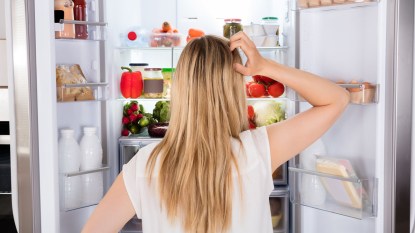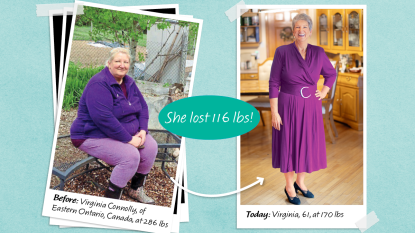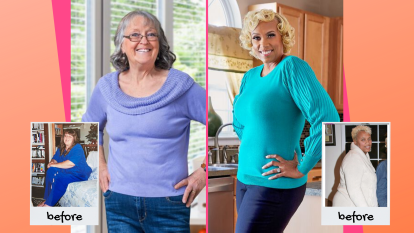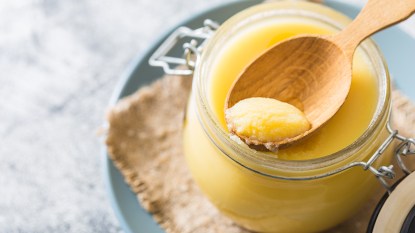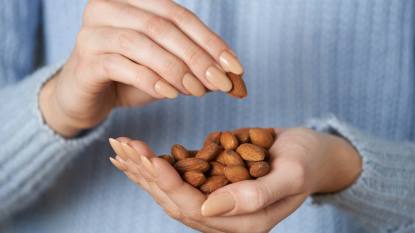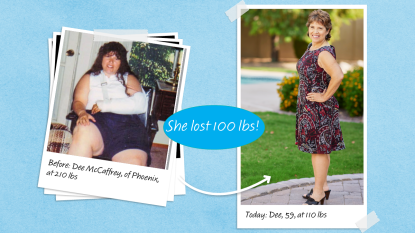Himalayan Tartary Buckwheat: The Newest Weight Loss Superfood
You can drink it as a tea, mix it in a smoothie or bake it up in treats
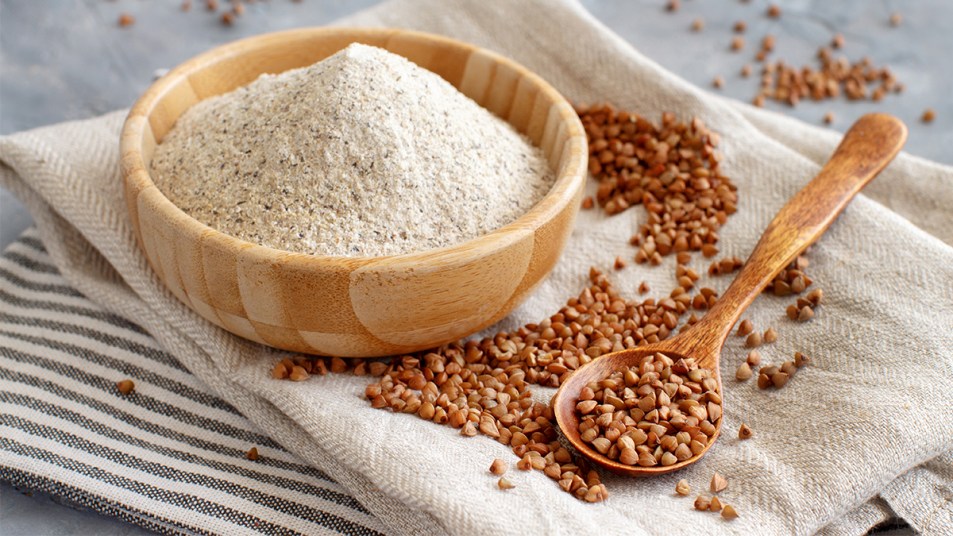
As magazine editors who specialize in covering the latest trends in weight loss, please believe me when I tell you that we’ve seen it all. But never did we ever think that a plant like buckwheat would start making headlines. So we were caught unawares when one of the top doctors in the weight loss space — Mark Hyman, MD — began talking about the power of a Himalayan tartary buckwheat (HTB) to help us lose weight. And when a second distinguished doctor — in this case William Li, MD — sang similar praises of a particular variety of buckwheat, we promptly stopped what we were doing and started taking notes.
What is Himalayan tartary buckwheat?
“Himalayan tartary buckwheat may be the world’s most powerful superfood, with more than 132 phytonutrients, some found nowhere else in nature,” raves Mark Hyman, MD, author of Young Forever. He adds that the tartary form, which is sold as flour and supplements, “is in another league.” Its rich stores of the nutrients quercetin and rutin help the plant, which originated in China, thrive in a harsh climate — an inner strength that seems to get passed along to us, triggering cellular and metabolic benefits after we digest it.
HTB is vegetarian, dairy-free and gluten-free. Plus, it’s packed with polyphenols, protein, prebiotics, antioxidants and resistant starch, a type of fiber that delays or “resists” digestion in the small intestine to help you feel full longer.
Himalayan tartary buckwheat vs buckwheat
Traditional buckwheat is also rich in quercetin and the antioxidant rutin and is also gluten-free and has more protein, vitamins and minerals than any other grain product. But newly discovered HTB, boasts even more nutrients. With higher levels of quercetin, luteolin and hobamine, which Dr. Hyman describes as “a rare age-reversing phytochemical so far found nowhere else in nature,” HTB is even more powerful.
HTB and weight loss
New research suggests that HTB could be a very valuable addition to your weight loss arsenal. Indeed, in a study in the Journal of Functional Foods, people who ate Himalayan tartary buckwheat lost an astonishing 966% more weight than those who didn’t.
How does HTB power off pounds? Much of it comes down to rutin. Rutin is a bioactive — a compound found in certain plant-based foods. Harvard-educated William Li, MD, author of Eat to Beat Your Diet, has identified 150 bioactives.
How bioactives help speed off weight
Bioactives have many health benefits, including tamping down inflammation, and warding off cancer and heart disease. But the most powerful benefit is that they literally alter our fat cells for good. What that means: “You can fight fat with food,” asserts Dr. Li. And it works wonders for those who have been told we’re too old to drop weight. “Women over 50 can easily use these foods to shed excess body fat and improve their metabolism.”
In addition to the rutin in HTB, you’ll find bioactives in other foods — and they have some pretty amazing slimming properties, too. Take the chlorogenic acid in apples and pears, which stops unsightly fat at the source. The nutrient redirects stem cells to transform into fat-burning brown fat cells instead of the white fat cells that create a lumpy, bumpy appearance below the skin’s surface.
“White fat cells act as a storage tank, expanding to 100 times their size, while brown fat cells are like space heaters that burn cellular fuel,” explains Dr. Li. “Wafer-thin brown fat is the hero fat in our bodies.” In one study, pears helped women lose 2 belly inches with no other changes. Dr. Li says, “Pears can shrink your waistline!”
Some bioactives even team up to boost slimming results. For example, tomatoes’ bioactive lycopene cuts the amount of liquid fat a cell holds. But when cooked in olive oil (which contains another bioactive, hydroxytyrosol), the body absorbs three times more lycopene. “It’s like sending a torpedo right into the fat you want to fight,” says Dr. Li. “Lycopene seeks out belly, thigh and butt fat to help slim your shape.” Maybe that’s why Mediterranean eaters are proven to lose four times more weight than other dieters!
HTB: what’s the best form?
Here’s where things get really interesting: HTB is sold as flour, supplements, as a tea and as a protein shake mix. It’s up to you to decide how to best incorporate it into your diet.
Love to bake? Choose Himalayan tartary buckwheat flour
Like some other seeds, HTB can easily be made into a flour, and you can use the flour in you favorite recipes. Simply swap the flour in your favorite recipes for the same amount of HTB flour. People who use the flour rave about its hearty, rich flavor, giving muffins, pumpkins and more a healthy, slimming upgrade. Tip: Add a dash of cinnamon, ginger, nutmeg or other spices and a few nuts to the flour to add more flavor to your favorite pancake recipe. You can order Big, Bold Health’s HTB Super Nutrition Flour through EveryMarket.
Favor curling up with a cuppa? Choose Himalayan tartary buckwheat tea
HTB tea is a staple in Chinese cuisine and boasts a nutty, distinctive aroma and a pale yellow color. You can order an authentic variety through Amazon.
Like to drink your nutrients? Choose a HTP protein shake
There’s also a HTB Rejuvenate™ Superfood Advanced Protein Shake Mix in a French Vanilla flavor that you can mix into your morning smoothie or into a glass of water. Find it at EveryMarket.
How to use HTB as part of a diet
To power up the slimming powers of Himalayan tartary buckwheat, Dr. Li recommends following a diet packed with a wide variety of bioactives. He has created a new Mediterranean-Asian plan, bursting with the foods eaten by the fittest cultures on the planet. Foods like edamame, lentils, chickpeas, broccoli rabe, cherries and tree nuts. Dr. Li says, “A type of shorthand for bioactives has been: ‘Eat the rainbow.’ The colors of our berries and our leafy greens often come from these natural bioactives.”
On the six-week “MediterAsian” plan, you’ll add naturally slimming foods from Mediterranean and Asian cuisine to your meals. “You will quickly begin feeling and seeing the difference,” says Dr. Li. “It is very doable and allows you to partake in foods you enjoy.” To start, simply follow the advice below for weeks 1 and 2. Then, if you want to take the plan even further, keep going with weeks 3 to 6.
Consuming more bioactive rich fare changes everything. Just ask Jenna Leveille, 51, who lost 32 belly inches—6 inches in one week!—by eating bioactive-rich apples and tomatoes daily. Now, she coaches women in her weight-loss group at GettingCloserEveryDay.com.
Keep scrolling to see how you can get similar results!
Weeks 1 & 2: eat more slimming plants
During a two-week jump start, you’ll add bioactive-rich plant foods like Himalayan tartary buckwheat, beans, fruits, veggies, nuts, seeds and teas to your normal diet. Avoid fried and ultra-processed foods, added sugar and artificial sweeteners. Dr. Li advises drinking the health “trinity”: water, green tea and black coffee.
Each day you’ll enjoy a light, fiber-rich breakfast such as fruit and eggs. For lunch and dinner, you’ll pair protein (like fish or chicken) with plant-based superstars like navy beans, asparagus, beets or mushrooms. “Try to eat as wide a range of bioactive foods as possible over the course of a week—aim for three different foods each day that you didn’t eat yesterday,” says Dr. Li. When in doubt: “Fresh foods are the backbone of MediterAsian eating.”
Weeks 3 to 6: change up your meal timing
For the next four weeks, you’ll continue eating bioactive superfoods, boosting results by adding intermittent fasting, a timing trick proven to melt away fat. Dr. Li explains, “Eat your first meal of the day at least 1 hour after waking up. This is when you ‘open’ your eating window. Then you ‘close’ your eating window when you finish dinner.” By not noshing later in the evening, Dr. Li says, “You give your metabolism more time to burn fat while you’re not eating.”
Weeks 6+: slim for life!
You can increase results by shortening your eating window or skipping two meals a week. Dr. Li says, now is the time to try exercise, get better sleep and lower stress to take full advantage of the body-transforming nutrients you’ve been eating. And if you get off track, simply restart the program. He explains, “The goal is to have a lifelong method to improve your metabolism while fighting fat.”
Can traditional buckwheat offer similar results?
If you can’t find HTB or would rather use up the buckwheat you have in your pantry, go right ahead! The nutrient-dense grain is also a slimming superhero. Adds Dr. Li, “This whole grain has anti-inflammatory, anti-adipose effects.” You can find it in grocery stores and in Asian markets. Here, three delicious ways to enjoy it.
Use it in place of rice
Dr. Li loves roasting the seeds (called groats) to make a pilaf. You can also simmer them in water or broth. The whole grain, often called a “pseudo cereal,” has powerful anti-inflammatory and anti-adipose powers. “It streamlines our metabolism to give us more energy and can shrink waist circumference.” It’s also a great source of protein. One cup of buckwheat has 22.4 grams of protein compared to 8 grams in a cup of quinoa.
Add it to pancakes
Boost your flapjack recipe by using 1 cup of buckwheat flour and 1 ⁄2 cup of regular flour for a nutty flavor. Dr. Hyman says, “If you’re shooting to maximize your nutrients in a single meal, you can enhance the phytonutrient content of buckwheat by adding spices like cloves and cinnamon.”
Try soba noodles
Find buckwheat soba noodles on the menu at Asian restaurants or in ready-to-boil packs at Walmart. The complex carbs also improve blood-sugar regulation. Soba noodles also contain prebiotic fibers that cultivate good gut bacteria. Dr. Li notes that this affordable food helps billions of people in Asia stay slim. Dr. Li says, “It’s like going on a treasure hunt in the grocery store and finding real gold that science has shown can help you fight body fat.”
A version of this article originally appeared in our print magazine, First for Women.





